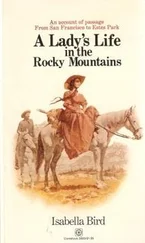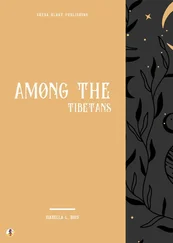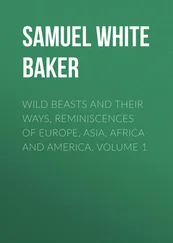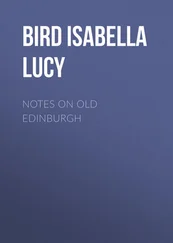Isabella Bird - Journeys in Persia and Kurdistan, Volume 1 (of 2)
Здесь есть возможность читать онлайн «Isabella Bird - Journeys in Persia and Kurdistan, Volume 1 (of 2)» — ознакомительный отрывок электронной книги совершенно бесплатно, а после прочтения отрывка купить полную версию. В некоторых случаях можно слушать аудио, скачать через торрент в формате fb2 и присутствует краткое содержание. ISBN: , Жанр: foreign_language, foreign_antique, foreign_prose, Путешествия и география, на английском языке. Описание произведения, (предисловие) а так же отзывы посетителей доступны на портале библиотеки ЛибКат.
- Название:Journeys in Persia and Kurdistan, Volume 1 (of 2)
- Автор:
- Жанр:
- Год:неизвестен
- ISBN:http://www.gutenberg.org/ebooks/38827
- Рейтинг книги:4 / 5. Голосов: 1
-
Избранное:Добавить в избранное
- Отзывы:
-
Ваша оценка:
- 80
- 1
- 2
- 3
- 4
- 5
Journeys in Persia and Kurdistan, Volume 1 (of 2): краткое содержание, описание и аннотация
Предлагаем к чтению аннотацию, описание, краткое содержание или предисловие (зависит от того, что написал сам автор книги «Journeys in Persia and Kurdistan, Volume 1 (of 2)»). Если вы не нашли необходимую информацию о книге — напишите в комментариях, мы постараемся отыскать её.
Journeys in Persia and Kurdistan, Volume 1 (of 2) — читать онлайн ознакомительный отрывок
Ниже представлен текст книги, разбитый по страницам. Система сохранения места последней прочитанной страницы, позволяет с удобством читать онлайн бесплатно книгу «Journeys in Persia and Kurdistan, Volume 1 (of 2)», без необходимости каждый раз заново искать на чём Вы остановились. Поставьте закладку, и сможете в любой момент перейти на страницу, на которой закончили чтение.
Интервал:
Закладка:
The children keep chiefly in bed. Meanwhile the woman, the busy bee of the family, contrives to patter about nearly all day in wet clothing, carrying out rubbish in single handfuls, breaking twigs, cleaning the pot, and feeding the cow. The roof, which in fine weather is the scene of most domestic occupations, is reached by a steep ladder, and she climbs this seven times in succession, each time carrying up a fowl, to pick for imaginary worms in the slimy mud. Dyed yarn is also carried up to steep in the rain, and in an interval of dryness some wool was taken up and carded. An hour before sunset she lights the fire, puts on the porridge, and again performs seven journeys with seven fowls, feeds them in the house, attends respectfully to her lord, feeds her family, including the cow, paddles through mire to draw water from the river, and unrolls and spreads the wadded quilts. By the time it is dark they are once more in bed, where I trust this harmless, industrious woman enjoys a well-earned sleep.
The clouds are breaking, and in spite of adverse rumours it is decided coûte que coûte to start to-morrow. For my own part I prefer the freedom even with the "swinishness" of a caravanserai to receiving hospitality for which no fitting return can be made.
I. L. B.LETTER IV
The rain at last ceased, and after the katirgis had squabbled for an hour over the baggage, we got off at ten, two days ago, very grateful for shelter and hospitality under such untoward circumstances. Six Bashi Bazouks and two zaptiehs on foot in ragged and incongruous uniforms escorted us to the Turkish frontier.
The streets were in a terrible condition, and horse and footmen, after an attempt to march in pairs, fell perforce into a floundering and disorderly single file, the footmen occasionally pulling themselves out of mud holes by the tails of the horses. Outside the town there was an expanse of mud and flooded water-channels which broke up the last attempt at a procession, and led to a general sauve qui peut . The mire was tenacious and up to the horses' knees, half the mules were down with their loads, Hadji rolled into the mud, my capable animal snorted and struggled, some went on banks and some took to streams, the asses had to be relieved of their loads, and the air was full of shouts and objurgations, till after much delay the forlorn rabble all struggled to the terra firma of a gravelly slope, splashed from head to foot.
The road crosses low, rolling, gravelly hills, with an occasional outcrop of red sandstone, and ascends on the whole. The sun was bright, but the wind was strong and very cold. The Bashi Bazouk escort was altogether harum-scarum and inconsequent, careering in circles, and firing at birds (which they never hit) from the saddle, and when we reached some low hills bearing a bad reputation, the officer, in order to represent danger and his vigilant care, threw them out in all directions scouting for robbers, till we came to a steepish hill crowned by a round tower with a mushroom top, a few ruinous mud buildings, and a tattered tent. Here the escort formed into one line, and the ragged garrison into another, with an officer facing them, and were photographed as they shivered in the biting wind. This tower is a Turkish frontier fort.
Soon afterwards the Persian frontier is crossed, the hills increase considerably in size, and mud was exchanged for firm, rough gravel. A feature of the otherwise featureless landscape is the frequent occurrence of towers like martello towers, on hill-tops, placed there for the shelter of the guards who formerly kept a look-out for robbers. In the uninteresting gravel lie pebbles of jasper and agate, emerald green, red, yellow, and purple. The first object of the slightest interest in this new country was a village of Ilyats, built of reed screens, with roofs of goat's-hair cloth, and with small yards with reed walls in front. The women, who wore full trousers and short jackets, were tall, somewhat striking-looking, and unveiled. Their hair hung down in long plaits, and they wore red handkerchiefs knotted at the back of the head.
There an escort of four Persian sowars joined us. The type of face was that with which we are familiar on Sasanian coins and sculptured stones, the brow and chin receding considerably, and the nose thin and projecting, the profile suggesting a beak rather than a human face, and the skin having the appearance of being drawn so tightly over the bones as to force the eyes into singular prominence.
A six hours' march ended at the wildly-situated village of Kasr-i-Shirin, high on the right bank of the Holwan, with a plantation of dates on the left bank and considerable cultivation in the valley. It has only eighty houses of the most wretched construction, rivalled in height and size by middens, the drainage of which wastes itself on the wretched roadway. A caravanserai of the most miserable description, a square fort with a small garrison, and some large graveyards with domed tombs and curious obelisks, are the salient features of this village. Its wretched aspect is accounted for by its insecurity. It has been destroyed by robber tribes as often as there was anything worth destroying, and it has been so tossed to and fro between Turkey and Persia as not to have any of the special characteristics of either empire.
We stopped short of the village, at a great pile of building on a height, in massiveness and irregularity resembling a German medieval castle, in which a letter had secured accommodation. It has been unoccupied since its owner, Jan Mir, a sheikh of a robber tribe, and the terror of the surrounding neighbourhood, was made away with by the Persian Government.
The accommodation consisted of great, dark, arched, vaulted rooms, with stone-flagged floors, noble in size, but needing fifty candles and huge log fires to light up and warm their dark recesses, and gruesome and damp with one candle and a crackle of twigs. They were clean, however, and their massive walls kept out the cold. The village is at an elevation of 2300 feet, and the temperature has greatly changed.
The interest of Kasr-i-Shirin is that it lies among masses of ancient rubble, and that the slopes which surround it are completely covered with hewn and unhewn stones of all sizes, the relics of a great city, at the western extremity of which the present wretched hamlet stands. 11 11 Another interest, however, is its connection with many of the romantic legends still told of Khosroe Parviz and his beautiful queen, complicated with love stories concerning the sculptor Farhad, to whom the Persians attribute some of their most famous rock sculptures. One of the most romantic of these legends is that Farhad loved Shirin, and that Khosroe was aware of it, and promised to give her to him if he could execute the impossible task of bringing to the city the abundant waters of the mountains. Farhad set himself to the Herculean labour, and to the horror of the king nearly accomplished it, when Khosroe, dreading the advancing necessity of losing Shirin or being dishonoured, sent to inform him of her death. Being at the time on the top of a precipice, urging on the work of the aqueduct, the news filled him with such ungovernable despair that he threw himself down and was killed.
The walls, which are easily traced, enclose an irregular square, the shortest front of which is said to be three miles long. They are built of roughly-hewn blocks of gray and red sandstone, and very hard mortar or concrete. The blocks are so huge in many places as to deserve the often misused epithet Cyclopean.
Within this enclosure are remains of houses built of water-worn round stones, which lie in monstrous heaps, and of a large fort on an eminence. In another direction are the ruins of an immense palace of quadrangular form, with only one entrance, and large underground rooms now nearly choked up. There are remains of what must have been very fine archways, but as the outer coating of hewn stone and all the decorations have fallen off, leaving only the inner case of rough rubble and concrete, the architectural forms are very badly defined, and the aspect of what must once have been magnificent is now forbidding and desolate. The remains of an aqueduct cut in the rock, and of troughs and stone pipes by which water was brought into the palace and city, from a distance of fifteen miles, are still traceable among the desolations, but of the beautiful gardens which they watered, and with which Khosroe surrounded the beautiful Shirin, not a trace remains. There was a pale sunset, flushing with pale pink distant leagues of sodden snow, and right across a lurid opening in a heavy mass of black clouds the great ruined pile of the palace of Khosroe the Magnificent stood out, a dismal commentary on splendour and fame.
Читать дальшеИнтервал:
Закладка:
Похожие книги на «Journeys in Persia and Kurdistan, Volume 1 (of 2)»
Представляем Вашему вниманию похожие книги на «Journeys in Persia and Kurdistan, Volume 1 (of 2)» списком для выбора. Мы отобрали схожую по названию и смыслу литературу в надежде предоставить читателям больше вариантов отыскать новые, интересные, ещё непрочитанные произведения.
Обсуждение, отзывы о книге «Journeys in Persia and Kurdistan, Volume 1 (of 2)» и просто собственные мнения читателей. Оставьте ваши комментарии, напишите, что Вы думаете о произведении, его смысле или главных героях. Укажите что конкретно понравилось, а что нет, и почему Вы так считаете.












